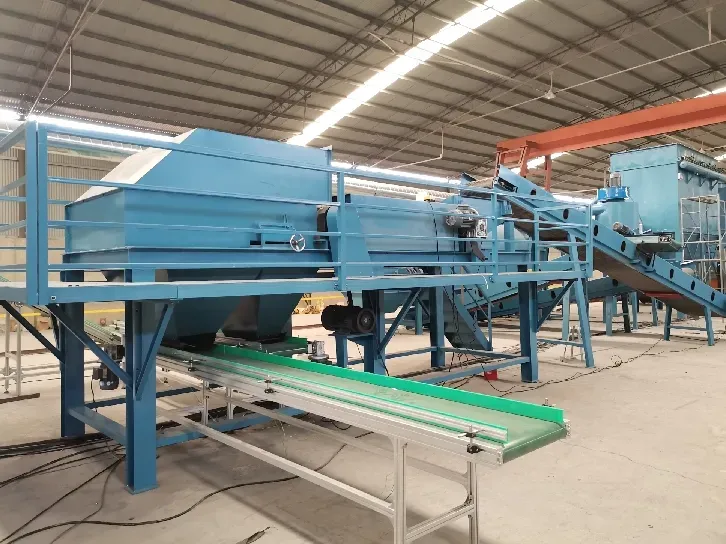
10 月 . 03, 2024 06:18 Back to list
Solutions for E-Waste Management
As the world becomes increasingly reliant on technology, electronic waste, or e-waste, has emerged as one of the fastest-growing waste streams globally. E-waste includes discarded electrical and electronic devices, ranging from smartphones and computers to refrigerators and televisions. The improper disposal of these items can lead to serious environmental and health issues due to the hazardous substances they contain. Therefore, developing effective solutions for e-waste management has become crucial for sustainable waste management practices.
1. Promote Awareness and Education
One of the foundational solutions to address e-waste management is raising awareness about the issue. Many consumers are unaware of the importance of properly disposing of their electronic devices or the potential harm caused by e-waste. Public awareness campaigns can educate individuals about the environmental impacts of e-waste, the recycling process, and the dangers of improper disposal. Schools and community organizations can play a significant role in educating the public, especially younger generations who regularly use digital devices.
2. Implement E-Waste Recycling Programs
Governments and municipalities must establish and promote recycling programs specifically designed for e-waste. These programs encourage consumers to return their old electronics to designated collection points rather than discarding them in landfills. Successful e-waste recycling programs often involve partnerships with local businesses, non-profit organizations, and recycling centers that can safely dismantle and recycle electronic devices. For example, many retailers offer take-back programs where consumers can drop off their old products when purchasing new ones.
Legislation plays a vital role in e-waste management. Governments should implement regulations that mandate proper e-waste disposal and promote responsible recycling practices among manufacturers. Extended Producer Responsibility (EPR) laws require manufacturers to take responsibility for the entire lifecycle of their products, including the take-back and recycling of used electronics. Such laws can incentivize companies to design products that are easier to recycle and reduce the amount of hazardous materials used in manufacturing.

4. Encourage Repair and Refurbishment
Promoting repair and refurbishment is another effective solution to reduce e-waste generation. Instead of discarding broken or outdated electronics, consumers should be encouraged to repair them. Establishing repair cafes and workshops can provide individuals with the skills and knowledge necessary to fix their devices, extending their lifespan and reducing the need for new products. Furthermore, companies can develop programs that offer refurbishment of old devices, making them available at lower prices while keeping them out of landfills.
5. Support Innovation in E-Waste Management Technologies
As the e-waste problem grows, innovation in recycling technologies and sustainable materials is essential. Investment in research and development can lead to more effective methods for extracting valuable materials from old electronics and ensuring safe disposal of hazardous substances. For instance, advancements in hydrometallurgical processes and robotics can enhance the efficiency of recycling programs, making it easier and more profitable to recover precious metals from e-waste.
6. Foster Global Cooperation
Finally, e-waste is a global problem that transcends borders, necessitating international cooperation for effective solutions. Countries can work together to share best practices, technology, and resources for e-waste management. Global treaties and agreements can help ensure that e-waste is managed responsibly across borders, preventing illegal dumping and promoting fair recycling practices.
In conclusion, managing e-waste is a multifaceted challenge that requires a collaborative approach involving awareness, regulation, innovation, and global cooperation. By promoting responsible disposal, encouraging repair, and implementing effective recycling programs, we can mitigate the negative impacts of e-waste on the environment and human health. Addressing e-waste management not only contributes to sustainability but also preserves valuable resources for future generations.
Latest news
Unveiling the Power of Eddy Current Separator
NewsSep.25,2024
Transform Your Home Recyclin:home metal shredder
NewsSep.25,2024
The Future of Waste Management with Recycling Line Picker
NewsSep.25,2024
The Benefits of a Metal Recycling Plant
NewsSep.25,2024
Revolutionize Material Separation with Onwang Technology
NewsSep.25,2024
Innovative Waste Management: Unveiling the MSW Sorting Plant
NewsSep.25,2024